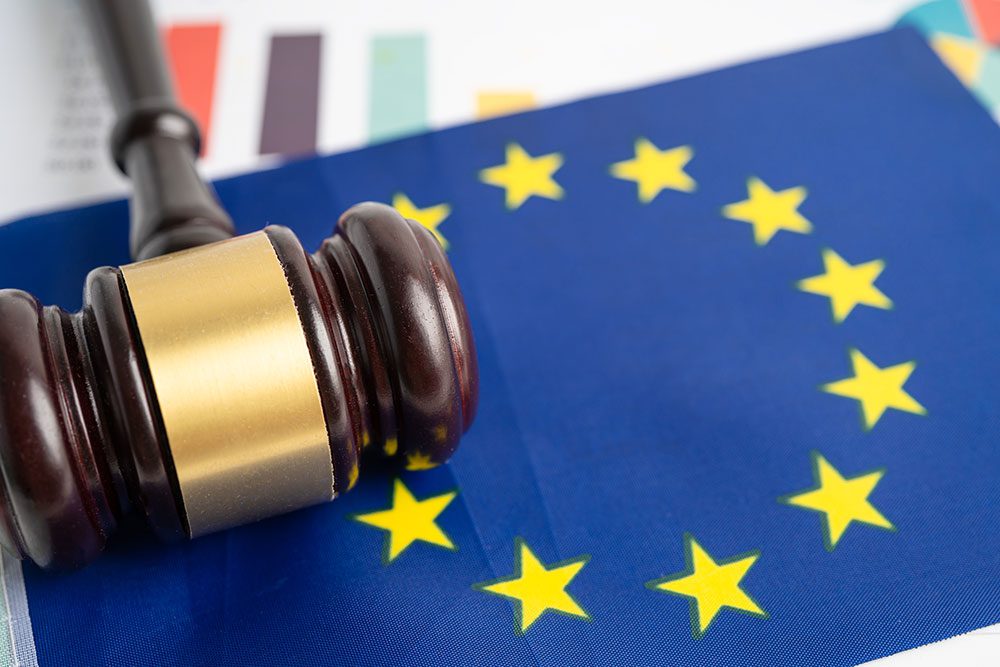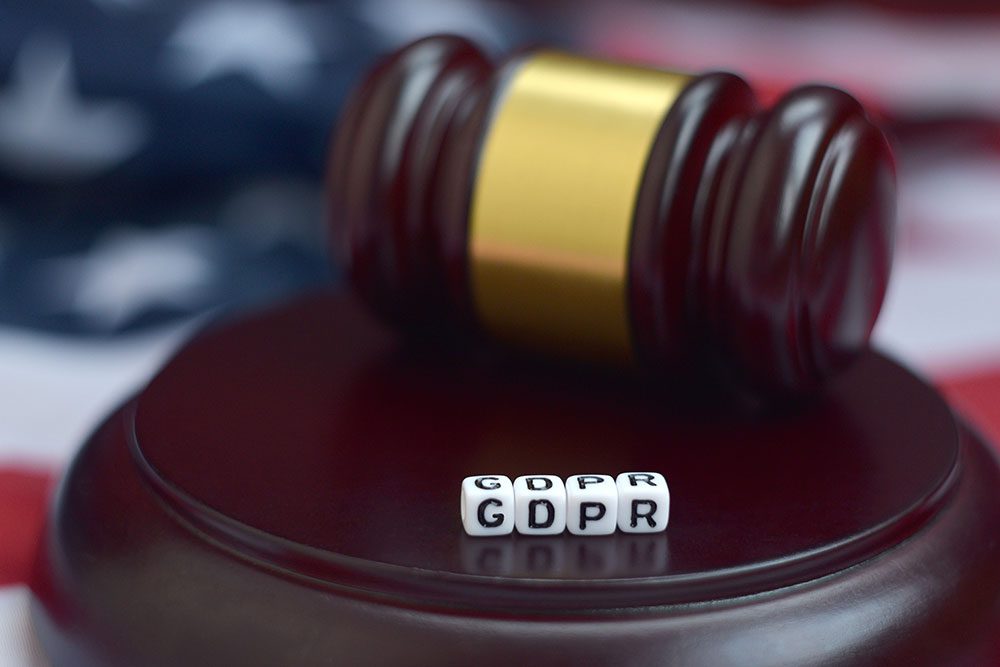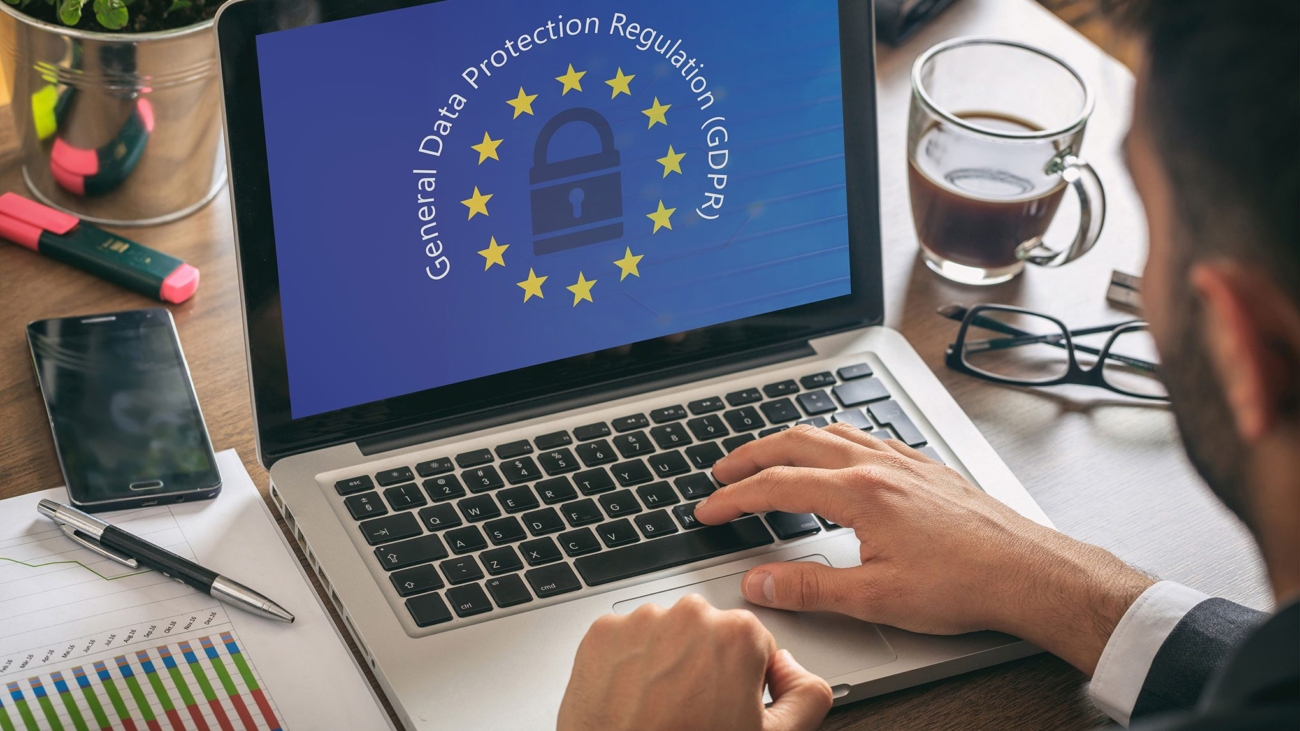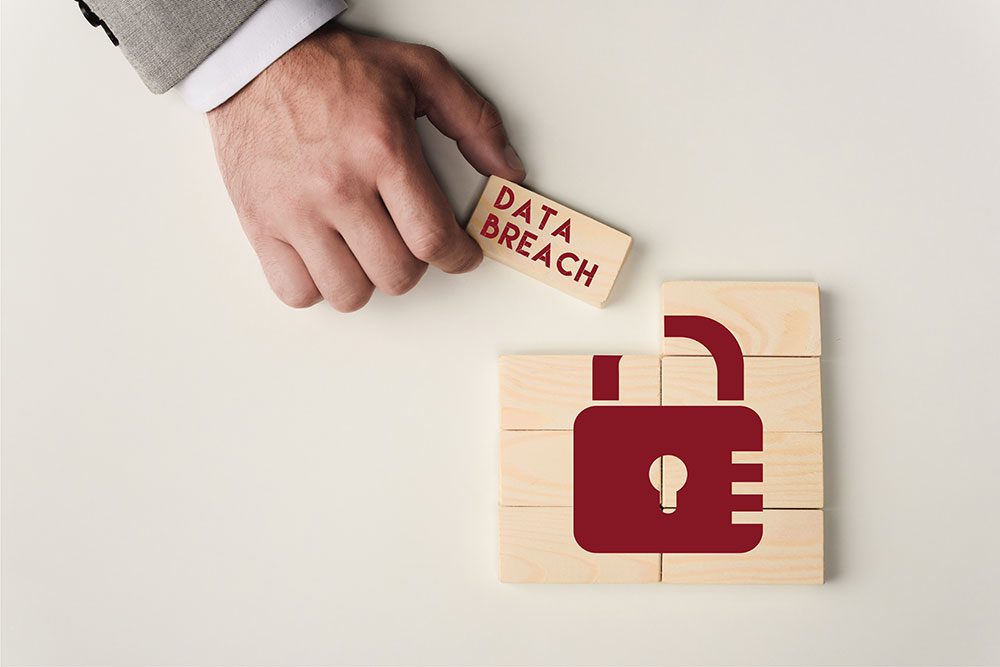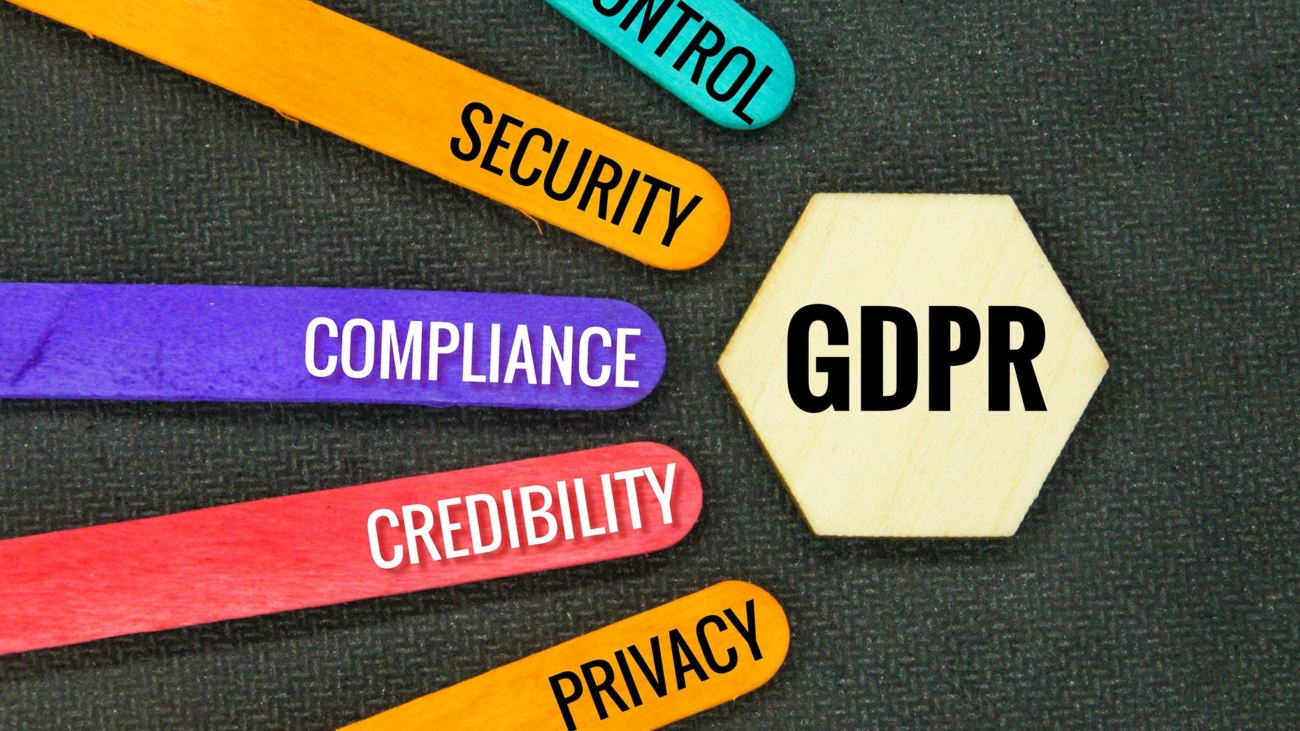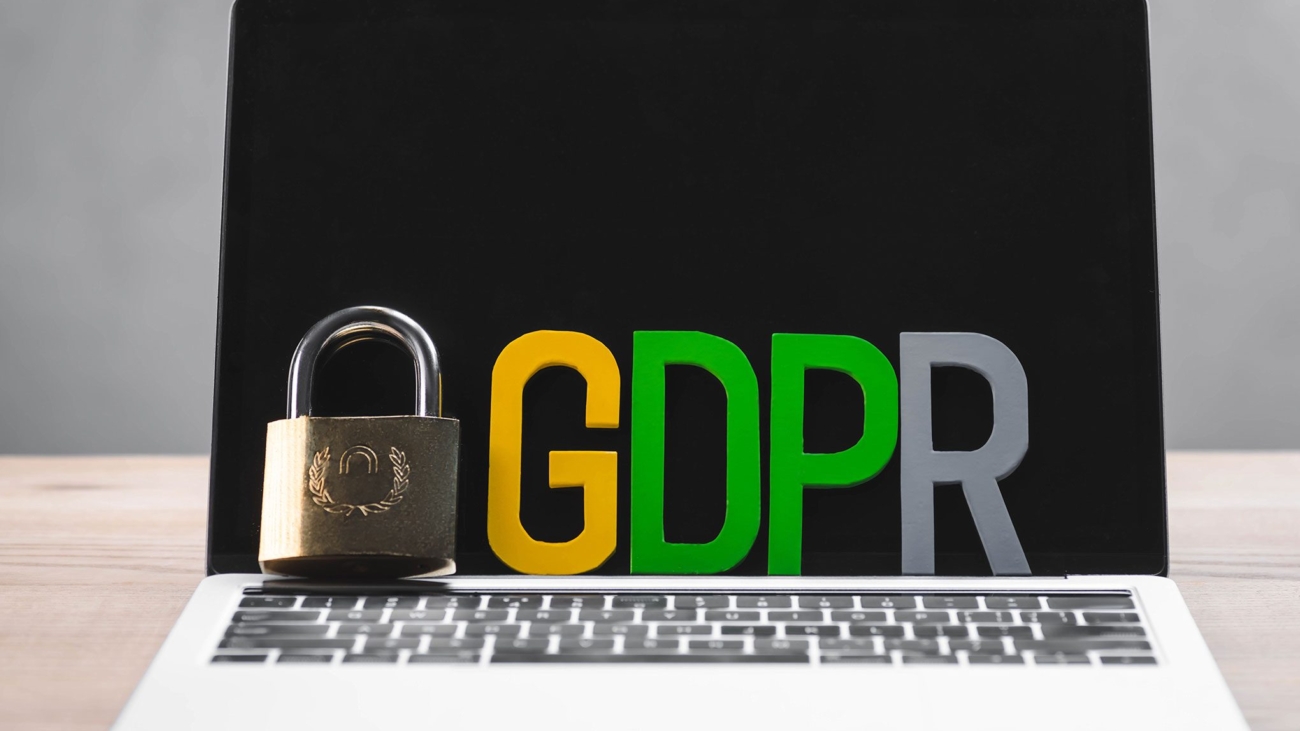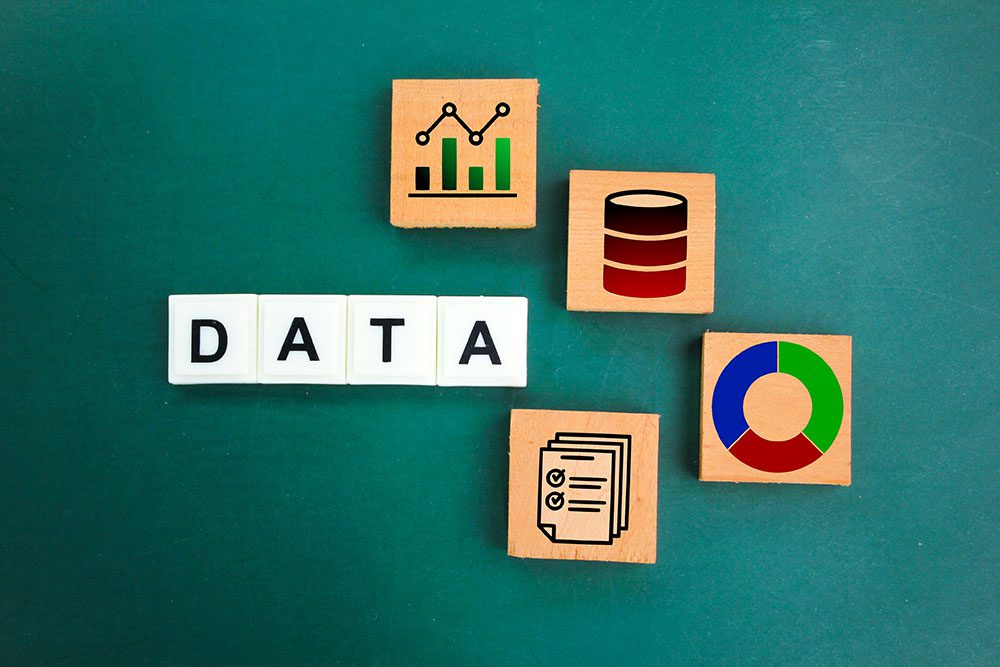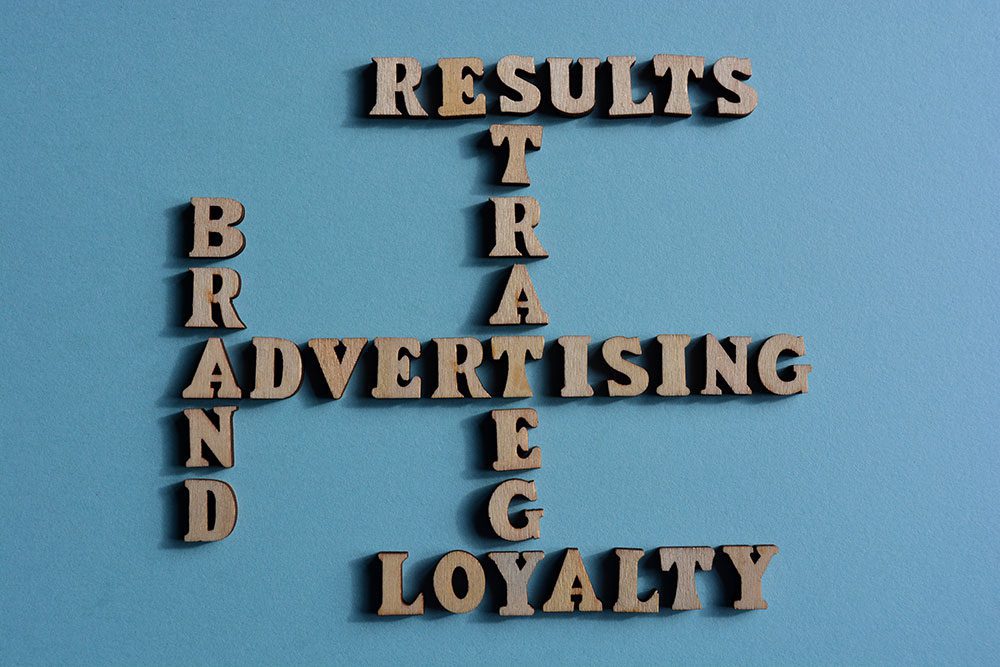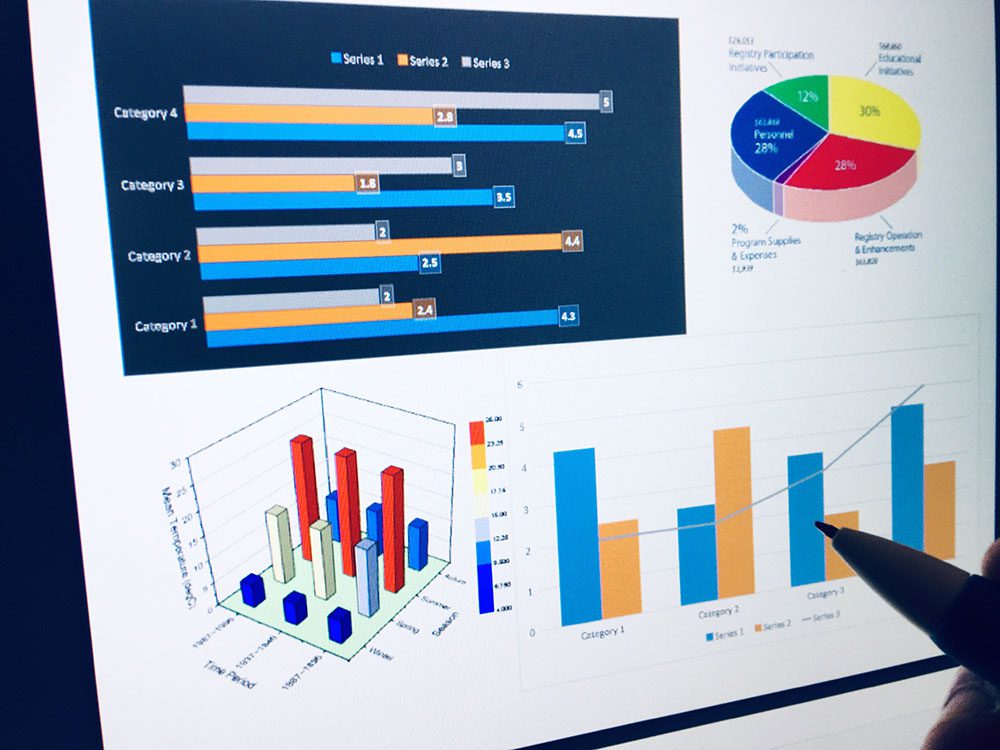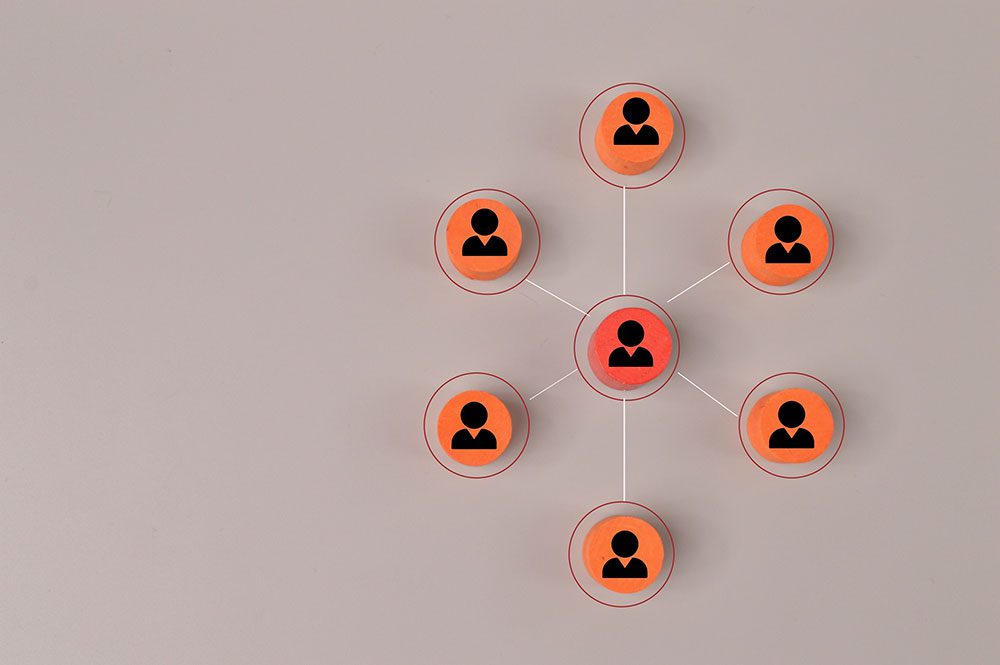Higher Conversion Rates: Encouraging Action Through Persuasive Content
Higher conversion rates refer to the increased percentage of visitors to a website or recipients of a marketing message who take a desired action, such as making a purchase, signing up for a newsletter, or requesting more information. Persuasive content plays a crucial role in achieving this by effectively influencing the audience’s decisions through well-crafted messages that resonate with their needs and motivations.
Driving Action at Every Stage
Persuasive, well-targeted content plays a crucial role in converting leads into customers. Content that addresses specific pain points, highlights benefits, and includes clear calls-to-action can significantly increase conversion rates.
- Tactics: Use case studies, demo videos, customer testimonials, and targeted landing pages to guide prospects through the final steps of the purchase decision.
- Real-World Example: A SaaS company might create a video series that demonstrates how its product solves industry-specific problems, accompanied by customer testimonials. The inclusion of a prominent “Start Your Free Trial” button encourages immediate action.
- Impact: Effective conversion-focused content minimizes friction in the buying process, leading to higher sales and improved customer acquisition rates.
Building Trust Through Transparency
Content that is open about pricing, product features, and real customer experiences reinforces trust and reduces buyer hesitation. This transparency can be a powerful conversion tool.
Cost-Effectiveness: Content Marketing vs. Paid Advertising
Investing in quality content is a long-term strategy that keeps giving back. Unlike paid ads, which require a steady, ongoing budget to maintain visibility, well-crafted content continues to generate traffic, leads, and sales long after it’s published. This cumulative effect not only drives a higher return on investment over time but also helps balance your marketing spend, making it an especially attractive option for small and medium-sized businesses with limited budgets.
Lower Long-Term Costs
Unlike paid advertising, which requires continuous investment to maintain visibility, high-quality content can continue to generate traffic, leads, and sales long after it is published.
- Tactics: Develop evergreen content that remains relevant over time. Use analytics to update and optimize older posts, ensuring they continue to perform well.
- Real-World Example: A blog post that ranks highly on search engines for a key phrase can continue to attract organic traffic for months or years without additional ad spend.
- Impact: Content marketing offers a higher return on investment (ROI) because its benefits accumulate over time. It is especially attractive for small and medium-sized businesses with limited budgets.
Balancing Budget Allocation
While paid advertising can yield immediate results, content marketing’s cumulative effect often results in lower customer acquisition costs over the long term. Additionally, the cost-per-lead generated through content is typically lower compared to traditional paid campaigns.
Customer Retention and Loyalty: Keeping Customers Engaged Post-Purchase
Maintaining a connection with your customers doesn’t end once a sale is made. By continuously engaging customers through personalized content, community-building efforts, and responsive support, brands not only encourage repeat purchases but also transform buyers into loyal advocates. This sustained engagement builds an emotional bond, ensuring customers feel valued and connected long after the initial transaction.
Ongoing Customer Engagement
Content marketing doesn’t stop at conversion. To build lasting loyalty, companies must continue to engage customers even after a purchase is made.
- Tactics: Utilize customer newsletters, how-to guides, user support forums, and exclusive content for loyal customers. Personalized email campaigns can keep customers informed about new features, product updates, and special offers.
- Real-World Example: An online retailer might send regular email newsletters featuring product tips, customer success stories, and exclusive discount offers. This sustained engagement not only increases repeat purchases but also encourages word-of-mouth referrals.
- Impact: Consistent post-purchase content builds an emotional connection that leads to higher customer retention. Loyal customers tend to spend more over time and can become brand advocates, spreading positive word-of-mouth that attracts new prospects.
Fostering a Community
By creating spaces for customers to interact—such as online communities or social media groups—brands can build a sense of belonging. This community-driven approach deepens customer relationships and makes it less likely that they will switch to competitors.
- Impact: Customer retention efforts that focus on building community and ongoing engagement often result in increased lifetime customer value and a stronger, more resilient brand presence.
Content Strategy and Planning
Content Strategy and Planning is the backbone of every successful content marketing initiative. It involves clearly defining your target audience, setting measurable goals, and creating a structured roadmap to produce and distribute engaging content that aligns with your business objectives. This process ensures that every piece of content is purpose-driven and seamlessly integrated into your overall marketing efforts.
Defining Your Target Audience and Buyer Personas
A successful content marketing strategy begins with a clear understanding of who you are trying to reach. You need to define your target audience in detail and often create buyer personas – semi-fictional archetypes that represent key segments of your audience. This ensures that all content is tailored to the interests, needs, and pain points of the people most likely to become your customers.
To do this, gather data and insights about your current customers and target market:
- Demographics: What is their age range, gender, location, job title or industry (if B2B), income level (if relevant)? For example, are you targeting 25–40 year-old tech-savvy marketers in urban areas, or retirees in the suburbs?
- Psychographics: What are their interests, values, and attitudes? What challenges or goals do they have in life or business that relate to your product? For instance, a persona for a project management tool might be “Project Manager Mary, 35, values organization and time-saving; her pain point is coordinating team tasks across different tools.”
- Behavioral traits: How do they consume content? Are they active on certain social media? Do they prefer reading blogs, watching videos, or listening to podcasts? At what time of day or on which device do they typically engage?
- Needs and Pain Points: Specifically identify the problems your audience faces that your content (and ultimately your product) can solve. If you list out questions or problems they frequently have, each can be a seed for content topics.
From this research, craft a few detailed personas. Give them names and backstories to make them feel real. For example:
- Persona A: “Marketing Mary” – a 30-year-old marketing manager at a mid-size company, who struggles to keep up with social media trends and is looking for efficient ways to increase brand engagement. She values learning new strategies (she often reads marketing blogs and listens to marketing podcasts on her commute), and she responds well to data-driven insights she can present to her boss.
- Persona B: “Owner Owen” – a 45-year-old small business owner (retail), very busy and not extremely tech-savvy, but always concerned with improving his store’s foot traffic and customer loyalty. He often searches Google for local advertising tips, and he appreciates clear, step-by-step advice that’s practical.
By doing this, you ensure content is audience-centric. When generating content ideas or writing, you can literally ask, “Would Marketing Mary find this useful or interesting? Does this address Owner Owen’s concern?” If not, you adjust the content or maybe decide it’s not a priority topic.
Moreover, personas help in tone and format decisions. If a persona rarely has time and usually skims content, you might favor short, concise pieces for that group. If another persona craves in-depth analysis, you’ll create longer form content (like e-books or webinars) for them. For example, one study or experience might be repackaged differently for different personas – a quick infographic for Mary (who needs quick insights for her next meeting) versus a detailed whitepaper for Owen (who will read it over the weekend to really learn something new for his business).
Keep in mind, you may have multiple personas, and part of content strategy is balancing content among them or mapping which content serves which persona. It’s often useful to tag your content in your planning with the persona it targets. That way, you can evaluate if your content calendar is covering all your important segments or if you’re over-serving one while neglecting another.
Additionally, consider the buyer’s journey stage in combination with personas: are they early-stage (just becoming aware of their problem), mid-stage (evaluating solutions), or late-stage (ready to decide)? Each persona might need different content at each stage (awareness content might be broader educational pieces, decision content might be case studies or product comparisons).
Remember, effective personas come from real data: talk to sales teams about common customer questions, survey your customers about their media habits or challenges, use analytics to see who is engaging with current content. Also, build in empathy – step into their shoes when brainstorming content. This approach is proven to yield better results: companies with well-researched personas get higher engagement. In fact, 71% of companies exceeding revenue goals use personas and update them regularly.
In summary, defining your audience and personas sharpens your content focus. It guides everything from topic selection to tone of voice to distribution channel choices. It ensures your content isn’t just adding to internet noise but is truly resonating with the people who matter for your business. This foundational step makes all the downstream content work much more effective because it’s rooted in what your audience actually cares about.
Performing Content Audits and Competitive Analysis
Before charging ahead with new content, it’s important to audit your existing content and see what’s working, what’s not, and where the gaps lie. A content audit is a systematic review of the content you already have, often cataloging every piece (blog articles, videos, whitepapers, etc.) and evaluating them on criteria like relevance, quality, performance, and timeliness.
Content Audit:
- Inventory: List all your content assets (you can use a spreadsheet or specialized tools). Include things like title, format, date published, author, target persona (if known), and metrics (page views, social shares, conversions generated, etc.). This gives you a holistic view.
- Assessment: For each piece, ask:
- Is this content still accurate and relevant, or is it outdated and in need of refresh?
- How did it perform? Do certain topics or formats have consistently high engagement (e.g., you notice all posts about “email marketing” got above-average views and shares)? Conversely, which content flopped (and why might that be)?
- Does this content align with current messaging and brand voice? Old content might not reflect a rebrand or new positioning.
- Are there content gaps? As you scan topics covered, you might realize, say, you have ten articles about advanced techniques but few introductory pieces for newcomers (a gap in the awareness stage content).
- Action Plan from Audit: Mark each piece with actions: keep as is (evergreen and performing well), update/upgrade (e.g., an older post with outdated stats that could be refreshed with new examples, or turning a short post into a more comprehensive guide to improve its value and SEO), combine (maybe you have two mediocre posts on similar topics that could be merged into one strong piece to avoid thin content or keyword cannibalization), or remove (if something is very outdated or off-brand and not salvageable, sometimes pruning it is best so it doesn’t undermine your quality or mislead readers). The audit can significantly boost your strategy: improving existing content often yields faster results than creating new because the content likely already has some SEO traction or audience familiarity.
Performing an audit also highlights content repurposing opportunities: e.g., seeing a blog post that could be turned into an infographic or seeing that a webinar recording hasn’t been transcribed into a blog post (missed SEO value).
Competitive Analysis: Next, examine what your competitors or industry peers are doing with their content. You want to understand the content landscape in your niche:
- Identify your main content competitors (they may not be the same as your product competitors – often they are, but sometimes a popular blog or media site in your niche is a competitor for attention).
- Review their content strategy: What topics do they focus on? How frequently do they publish? What formats (blogs, videos, etc.) are they using?
- Gauge their success: Look at social engagement on their posts (shares, comments) and use SEO tools to see their top-performing content (which keywords they rank for, how much traffic certain pages get, how many backlinks their content has). For instance, if a competitor’s article on “X tips for beginners” has tons of backlinks and ranks #1 on Google, that’s a signal that the topic is valuable and that your site might want its own even-better version or a complementary piecefile-urnt5gpas4g2qubyairqfh.
- Identify content gaps in the market: Through this analysis, you might find topics that no one has addressed well. These are opportunities for you to fill and own. Alternatively, you might find everyone has covered a topic, but perhaps not from a certain angle or not for a certain sub-audience – an opportunity to differentiate.
- Note competitor strengths to differentiate: If a competitor is dominating in one area (say they have very technical blog content that ranks well), you might choose to differentiate by focusing on easy-to-understand guides or rich video content, or target an under-served segment. The idea isn’t to copy competitors content-for-content, but to find where you can do better or different. For example, if all competitors produce generic “Top 10” list articles, you might invest in unique research or case studies that provide fresh information that generic lists lack.
- Learn from their mistakes: You can also spot what might not be working for them. If you see their community isn’t responding to certain content (no comments on their case studies perhaps), consider why (maybe it’s too salesy or not promoted well).
Competitive analysis can also inform distribution tactics: maybe you notice a competitor’s content gets a lot of traction on LinkedIn but not Twitter – that might indicate where your audience hangs out, or an opportunity to outflank on a platform they’re neglecting.
By combining the content audit and competitive analysis, you create a roadmap: you know what valuable content you already have (and can update or repromote), what content you need to create to cover gaps or outshine competition, and where to focus your resources for maximum impact. For instance, an audit may reveal your site has plenty of advanced content but the competitor is capturing all the newbies with 101-level content – thus, you plan a series of beginner-friendly posts to capture that segment.
This step also prevents redundant effort – no point writing something you effectively already have, or tackling a topic in exactly the same way a competitor did if it’s saturated. Instead, you aim to produce content that is unique, high-quality, and strategically chosen based on internal and external insights.In a nutshell, content auditing and competitive analysis ensure your content marketing strategy is data-informed and strategic rather than guesswork. It grounds your plans in reality and sets you up to create content that stands out in the crowd and aligns perfectly with both your audience needs and your business goals.
Setting SMART Goals for Content Marketing
With a clear understanding of your audience and content landscape, the next step is defining what you want to achieve with content marketing and ensuring those goals are SMART: Specific, Measurable, Achievable, Relevant, and Time-bound. Clear goals provide direction for your strategy and benchmarks to track success.
Some examples of SMART content marketing goals and how to frame them:
- Increase Website Traffic: Instead of a vague “get more traffic,” set a specific target like “Increase monthly organic website visitors from 20,000 to 30,000 by the end of this year.” This is specific (increase by 10,000), measurable (via Google Analytics), presumably achievable (a 50% growth – is that realistic given past growth? you decide based on resources and baseline), relevant (traffic often correlates to more leads or awareness), and time-bound (by end of the year).
- Generate Leads: For example, “Obtain 500 new marketing-qualified leads (MQLs) through content downloads and newsletter sign-ups in Q1.” This ties content directly to lead generation by a set number and deadline. You would then orient your efforts (like gating a valuable e-book or running a webinar) to hit that lead count.
- Improve Conversion Rates: Maybe your blog gets traffic but few sign-ups. A goal can be “Increase blog-to-newsletter conversion rate from 1% to 2% in six months.” This might involve adding better CTAs on blog posts or offering content upgrades to motivate sign-ups (we have a clear metric to watch – conversion %, and a timeframe to achieve it).
- Enhance Engagement: For instance, “Boost average time on page for our content pages from 1:30 to 2:30 minutes within 3 months” or “Achieve an average of 50 social shares per blog post within the next 6 months.” Engagement goals ensure you’re not just attracting clicks but actually holding attention and prompting interaction.
- Elevate Search Rankings for Key Topics: e.g., “Get 5 targeted non-branded keywords on the first page of Google search results within 9 months.” This is specific (certain keywords), measurable (rank tracking), relevant (SEO is a major content marketing function), etc. You then create and optimize content to realize this (and measure progress for each keyword).
- Increase Brand Awareness or Thought Leadership: This can be trickier to quantify, but proxies could be “Secure at least 3 guest posting spots on major industry sites this quarter” (specific output that increases brand presence) or “Grow podcast listeners by 25% by next season” if you have a podcast aimed at thought leadership. Even something like “Achieve 1,000 downloads of our industry research report” can serve as a measure of reach and influence.
- Retention/Customer Use Goals (if content is also used for customer success): e.g., “Reduce support ticket volume by 10% in 6 months through expanded how-to content on our help center.” The content here (like tutorials and FAQs) directly aims to educate customers better, measured by fewer repetitive questions.
When setting these goals, ensure they align with overall marketing and company objectives. For instance, if the company’s priority is expanding into a new market or segment, one of your content goals might specifically revolve around content tailored to that segment (and a metric like number of leads from that new segment).
After setting the goals, break them down into sub-goals or milestones if needed. For example, if the goal is 500 new leads in Q1, that’s roughly ~167 leads per month. You can then monitor monthly and adjust tactics if January only yielded 100 (meaning you need to boost efforts to hit 200 in February to catch up, for instance).
Having goals also helps you decide what KPIs (Key Performance Indicators) to track: e.g., organic visits, bounce rate, number of leads, conversion rates, social engagement counts, search ranking positions, etc., corresponding to each SMART goal. Regularly reviewing these KPIs against your targets keeps your team focused and allows you to celebrate wins or course-correct early if things are off track.
By making goals SMART, you turn content marketing from a fuzzy “we hope this helps business” into a discipline with clear expectations and accountability. It’s motivating for the team to have specific targets (“we want X downloads this month – how do we make that happen with content?”) and it’s also easier to justify budget and resources for content when you can show management concrete results against these goals (for example, “We aimed for 500 leads and we achieved 550 – content marketing is delivering beyond expectations”).
In summary, set 2–5 core SMART goals for your content marketing (the exact number depends on how many facets you want to manage). Make sure they’re ambitious but realistic. These goals will become the north star for strategy – every content idea or campaign should trace back to at least one of these goals, ensuring all your efforts are aligned with desired outcomes.
Choosing the Right Content Formats and Platforms
With goals and audience defined, the next strategic consideration is what types of content to create (formats) and where to publish or promote them (platforms). Choosing the right formats and channels is crucial to meet your audience where they are and to leverage your team’s strengths.
Content Formats: Not all content forms make sense for every brand or audience. Select formats that:
- Your audience consumes regularly or prefers (based on personal insights). For instance, busy executives might prefer podcasts they can listen to while traveling, while younger audiences might lean towards short videos or interactive web content.
- Suit the information you’re conveying. If you have a lot of data, an infographic or report might be best. If you’re demonstrating a physical product, video is ideal. If you’re discussing abstract strategy, an article or whitepaper could work well.
- Align with resources: consider your team’s skills. If no one on your team is comfortable on camera or editing videos, you might focus on written and graphic content first, or plan to outsource/hire for video production if it’s needed. It’s better to do a couple formats excellently than stretch into too many poorly.
Based on typical content marketing practice, you may end up with a mix like:
- Regular blog posts (text content) for SEO and thought leadership.
- Infographics and custom images to support blog content and share on social media.
- Videos (even short ones) to explain key concepts or show product use-cases.
- Webinars or podcasts periodically if in-depth discussion is valued by your audience.
- Downloadable assets (e-books, templates, checklists) to use as gated lead magnets.
For example, a B2B software company might choose blog articles, case study PDFs, webinars, and LinkedIn posts as their main content formats, whereas a travel brand might emphasize Instagram photos, YouTube travel vlogs, and blog travel guides.
Platforms and Channels: “Platforms” means both the hosting platform for the content and the channels for distributing it:
- Owned platforms: e.g., your company website/blog, your email newsletter, your official social media pages. You have control here. The blog is usually the hub of content (where lengthy content lives), and you distribute outwards.
- Social media channels: Decide which social networks are key for your audience. For a visually-driven brand, maybe Instagram and Pinterest are priority. For professional content, LinkedIn and Twitter might be key. Use the personal research: e.g., if “Marketing Mary” spends time in LinkedIn groups and on Twitter, prioritize those for sharing content. If “Owner Owen” is more likely to be on Facebook and search on Google, focus on a Facebook presence and SEO.
- Community or third-party platforms: Are there important external sites, forums or content aggregators in your niche? For instance, a tech company might engage on Reddit or Stack Overflow. Or publishing articles on Medium.com or submitting presentations on SlideShare (now part of Scribd/LinkedIn) can reach new people. Guest posting on industry blogs (as discussed) is also a distribution on others’ platforms.
- Search engines: Not a platform per se, but SEO is a channel. Optimizing your content so it appears on Google, Bing, etc. is critical for organic discovery.
When choosing, also consider platform-purpose fit. For example:
- Use YouTube for how-to or demonstration videos (second largest search engine), and embed those videos in your site.
- Use LinkedIn for B2B content distribution, perhaps through LinkedIn Articles or posts – also the best for targeting content by job role.
- Use Instagram for inspirational or lifestyle content (like travel photos for a tourism client or before/after remodel pics for a home improvement brand).
- Utilize Email (newsletters, drip campaigns) to ensure your content reaches those who have shown enough interest to subscribe – often one of the highest-converting channels as it hits an already-warm audience directly.
- If your audience is younger (Gen Z/early millennial), consider TikTok or Snapchat with short, fun content – but only if you can authentically create content suited to those platforms (e.g., quirky 15-second tips, quick demos).
- Professional communities or Q&A sites can be a quiet goldmine – e.g., writing a detailed answer on Quora that links back to your blog for more depth can drive curious traffic.
Also determine frequency and style per platform. For instance, maybe you’ll blog twice a week, tweet 3-5 times a day (given Twitter’s fast-paced nature), post on LinkedIn twice a week, and do a monthly webinar. A content calendar (discussed next) helps schedule this out.
Ensure messaging is consistent but adapted for each channel’s norms. For example, the core message from a blog post can be reshaped: on Twitter you might share a punchy stat from it with a link, on LinkedIn you might share a short narrative or key takeaway in a post, on Instagram you might post a relevant image with a micro-caption summarizing one tip from the blog (redirecting people to your bio link for the full post). Same essence, different format to suit the audience’s consumption style on that platform.
By consciously choosing formats and platforms rather than trying to do everything everywhere, you focus on what will move the needle for your goals. It’s often better to dominate 2 channels than be mediocre on 5. You can expand to new formats/platforms as you grow or see need. For example, perhaps start with blogging and LinkedIn if you’re B2B; once that’s stable and yielding results, then add a podcast if you identify an appetite for deeper discussions.
In summary, pick content types that play to your audience’s preferences and your strengths, and pick platforms where your audience is active and where your content can shine. This strategic alignment ensures that the effort you put into content creation is effectively reaching and engaging the people for whom it’s intended.
Creating a Content Calendar and Publishing Schedule
Once you know what formats you’re creating and where you’ll publish them, the next step is to get organized with a content calendar and a consistent publishing schedule. This ensures that content production is regular (avoiding content droughts or last-minute scrambles) and that all your channels are coordinated.
Content Calendar: A content calendar is a planning document (often a simple spreadsheet or a tool like Trello, Asana, or a dedicated content calendar app) that maps out:
- The dates or weeks when content will be published.
- The topics/titles of each content piece.
- The format (blog, video, social post, etc.) and responsible person or team member.
- The target persona or channel for that content if applicable.
- Any key events or themes to align with (seasonal topics, product launches, holidays, campaigns).
For example, your calendar might show that in Week 1 of next month, you’ll publish:
- Tuesday: Blog post on Topic X (author: Alice; persona: Marketing Mary; goal: awareness/SEO).
- Thursday: Case study PDF on Website (with blog summary) about Client Y (author: Bob; persona: Owner Owen; goal: consideration).
- Also throughout Week 1, you have 3 planned LinkedIn posts (Mon, Wed, Fri) promoting that case study in slices, and a Friday Twitter poll engaging people on a question related to Topic X.
- It might also mark that a webinar will occur on the 20th, so content earlier in the month will promote registration for it, and content after will repurpose its insights.
By laying this out, you achieve several things:
- Consistency: You ensure you’re posting regularly. For instance, if your aim is two blog posts a week, your calendar slots them in. Audiences and algorithms both respond well to consistent schedules (e.g., a weekly newsletter that always comes Wednesday morning becomes part of a reader’s routine).
- Balance: You can visually ensure you’re covering a mix of personas, topics, and funnel stages over time. If you see a whole month of planned content but none addresses beginners, you can adjust. Or if the person “Marketing Mary” has 10 pieces and “Owner Owen” only 2, maybe add more for Owen if that segment is equally important.
- Alignment with marketing themes: If your company has broader campaigns (say a spring promotion or an event in July), the calendar lets you slot relevant content leading up to and during those times. E.g., if a new product feature is launching on Aug 1, you might plan educational content about the problem that feature solves throughout July to build interest.
- Lead time: It forces you to think ahead. If a big e-book is on the calendar for next month, you know content creation for it must start now (and you can backward-schedule steps like draft due date, design, review). This reduces last-minute panic and ensures quality because you have enough time to do each piece well. Many companies operate with an editorial calendar at least one or two months out for major pieces, with flexibility to add timely content if needed.
Publishing Schedule: This is more granular – it’s the actual timing and frequency. For example:
- Blog – new posts every Tuesday and Thursday at 9AM.
- LinkedIn – one post every weekday at noon.
- Podcast – new episode on the 1st of each month.
- Webinar – held last Wednesday of each month.
- Newsletter – sent every Friday at 10AM with the week’s content highlights.
Setting these rhythms helps manage audience expectations and also helps internally to coordinate production. If you know the newsletter goes every Friday, your team works towards that cutoff each week (gathering what content to include by Thursday, etc.).
Be mindful of your resources when setting frequency: It’s better to start modestly and meet those deadlines than over-commit. You can always scale up once you have a groove. For example, if you’re a small team, maybe start with one blog post a week rather than promising three. Consistency is key – a consistent weekly post is better than 3 posts one week and none for the next three weeks.
Also consider optimal times for publishing, which can be gleaned from analytics or general research (e.g., many find Tuesdays/Thursdays mornings are good for publishing professional content as readers are active then, whereas weekends might be slower – but if your audience is hobbyists, weekend might be prime time for them to read/watch content). Part of the schedule might involve testing different times for sending emails or posting on socials, then standardizing on what yields best open rates or engagement.
A calendar also helps coordinate repurposing and cross-promotion. For example, if you publish a big whitepaper on March 10, the calendar can also mark “March 17: publish summary blog of whitepaper” and “Mar 10-30: run LinkedIn ad campaign promoting whitepaper.” This ensures you fully leverage each piece in an organized way.
Don’t forget to account for content creation lead times in the calendar planning. Some content might need prep (like a video might need one week of production). You could maintain a separate production calendar or simply include internal deadlines on the calendar (e.g., “Video draft ready by Mar 5 for Mar 12 publish”). Many use a color-coding or status system on calendars (planned, in writing, in design, scheduled, published) to track progress.
By maintaining and following a content calendar, you bring an editorial discipline to content marketing akin to running a publication. This leads to a steady stream of content that keeps your audience engaged and also allows your team to be proactive rather than reactive. Remember to review and adjust the calendar as needed – it’s a living document. If an unexpected trend or opportunity pops up, you can slot in a new content piece or shuffle the less time-sensitive ones.In summary, a well-structured content calendar and publishing schedule ensure your content marketing is consistent, strategic, and manageable. They transform broad strategy into actionable, scheduled tasks. This not only maximizes efficiency but also helps achieve the continuity and reliability that audiences (and success metrics) love.
Table of Content
- Content Marketing: A Comprehensive, Insightful Guide- Part 1
- Content Marketing: A Comprehensive, Insightful Guide- Part 2
- Content Marketing: A Comprehensive, Insightful Guide- Part 3
- Content Marketing: A Comprehensive, Insightful Guide- Part 4
- Content Marketing: A Comprehensive, Insightful Guide- Part 5
- Content Marketing: A Comprehensive, Insightful Guide- Part 6
Written by Jean Bonheur Nsengimana




